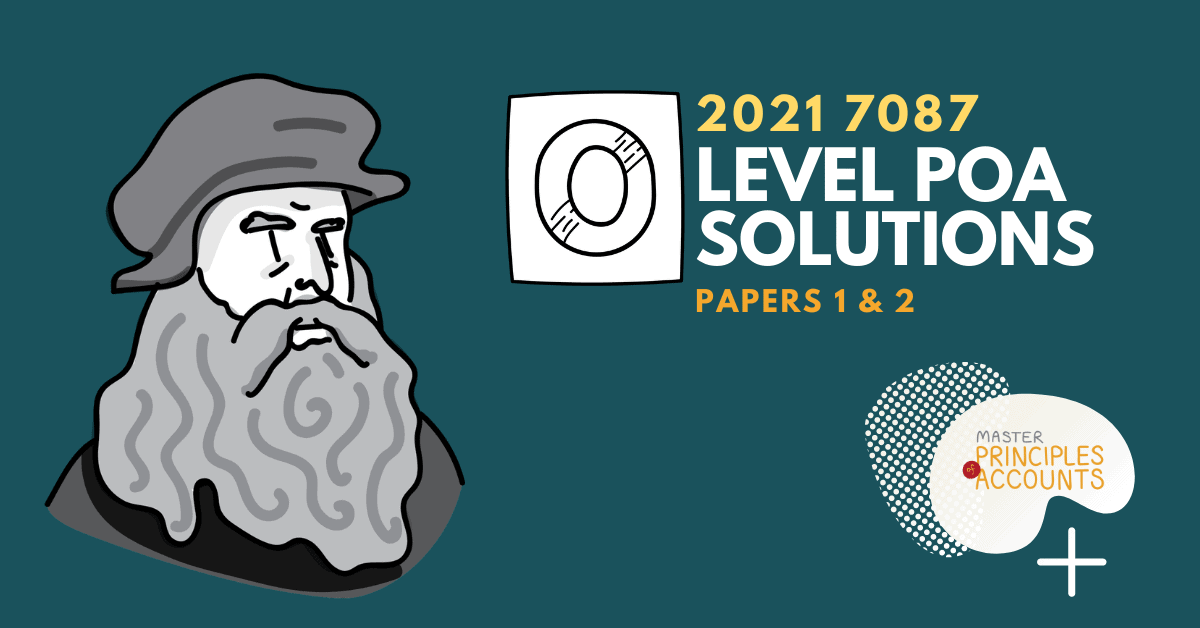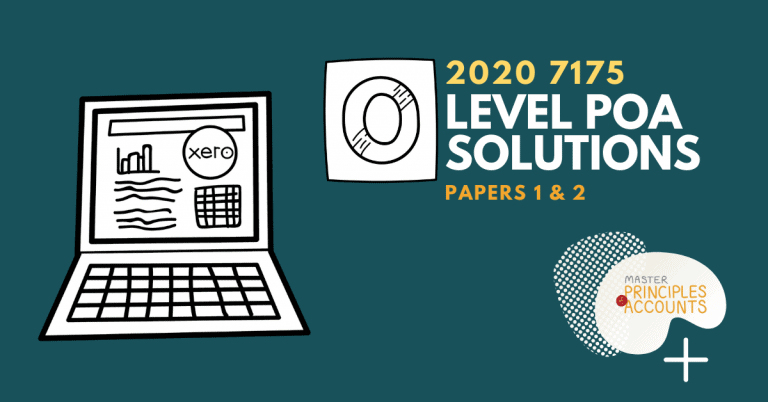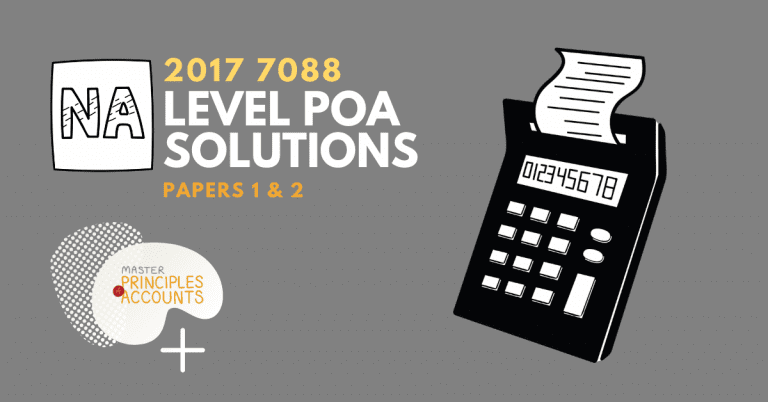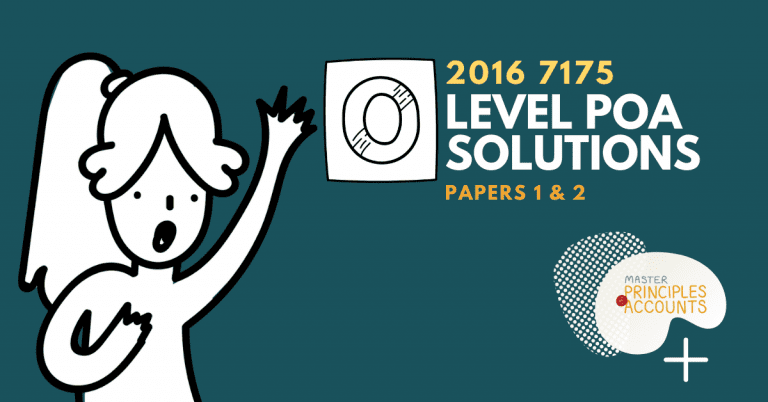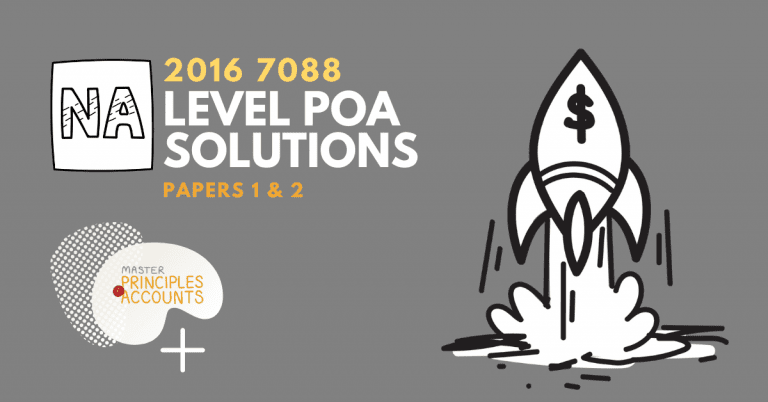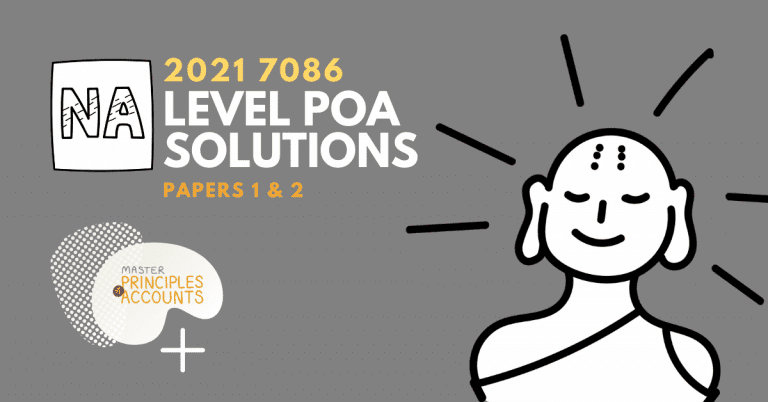2021 O Level POA Answers 7087 Paper 1
Paper 1 :
ai) 1 July 2019- The business obtained a bank loan of $40,000.
(ii)30 June 2020- The business repaid $8000 of the bank loan by cheque
(b)(i) 1 January 2020- The business reversed the adjustment made for $1200 owed in the previous financial year
(ii)30 june 2020- The business paid interest expense of $2400 by cheque
(c) Statement of financial performance (extract) for the year ended 31 December 2020
| Less : other expense | $ | $ |
| Interest expense | 2,160 |
(d) Statement of financial position (extract) as at 31 December 2020
| Non-current liabilities | $ |
| Long term borrowings (32,000-8000) | 24,000 |
| Current liabilities | |
| Current portion of long term borrowings | 8,000 |
| Interest expense payable | 960 |
(e) A bank loan is recorded as a non-current liability in the statement of financial position while a bank overdraft is recorded as a current liability in the statement of financial position.
(f) Name: Accrual basis of accounting
Explanation: According to accrual basis of accounting expenses are represented in the financial period that the services have been used in/that the expense is incurred regardless of when payment is made
ai) Asset- Resources a business owns or controls that are expected to provide future benefits
ii) liability- Obligations owed by a business to other that are expected to be settled in the future
iii) Income- Amounts earned from the activities of a business
iv) Expense- Cost incurred to earn the income in the same accounting period
b) Total equity= 50,000 + 80,000 =$130,000
Total liabilities= 7,800 + 1,200 + 10,000 =$19,000
Total assets= 130,000 +19,000 =$149,000
Net book value= 149,000 – 13,500 – 12,000 =$123,500
c) In accordance to the consistency theory, once an accounting method is chosen, this method should be applied to all future accounting periods to enable meaningful comparison.
a)
Journal
| Date | Particulars | Dr | Cr |
| 2021 | $ | $ | |
| Equipment (5,400-4,500) | 900 | ||
| Trade payable – Bernardo | 900 |
(b)
| Overstated $ | Understated $ | No effect $ | |
| Error 2 | 60 | ||
| Error 3 | ✓ | ||
| Error 4 | 75 |
(c) Accounting entity theory states that the activities of a business and the actions of the owner are separate entities. All transactions should be recorded from the point of view of the business.
a)
| 30 september 2020 | 30 september 2021 | |
| Workings | {[(17,200+25,500)÷2]/ 278,500} x 365 | {[(25,500+34,000) ÷2]/299250} x 365 |
| Trade receivables collection period (days) | 27.98 days | 36.29 days |
(b) The trade receivables collection period has worsened from 27.98 days in 2020 to 36.29 days in 2021. This shows that the business is taking a longer time to collect payment from it’s credit customers this year as compared to last year. In fact the trade receivables collection period on 30 September 2021 has exceeded the credit terms of the business of 30 days. This would also mean that over the two years, Ping’s business runs a higher credit risk as the business might be facing difficulties in collecting payments from its trade receivable and hence is less efficient in managing its trade receivables.
(c) 1. Offer cash discounts to encourage credit customers to pay early.
2. Ensure credit is granted to customers who are financially able
(d) Any two from:
Economic outlook
Industry outlook
Reputation of customers
Repayment history
(e)Prudence theory

